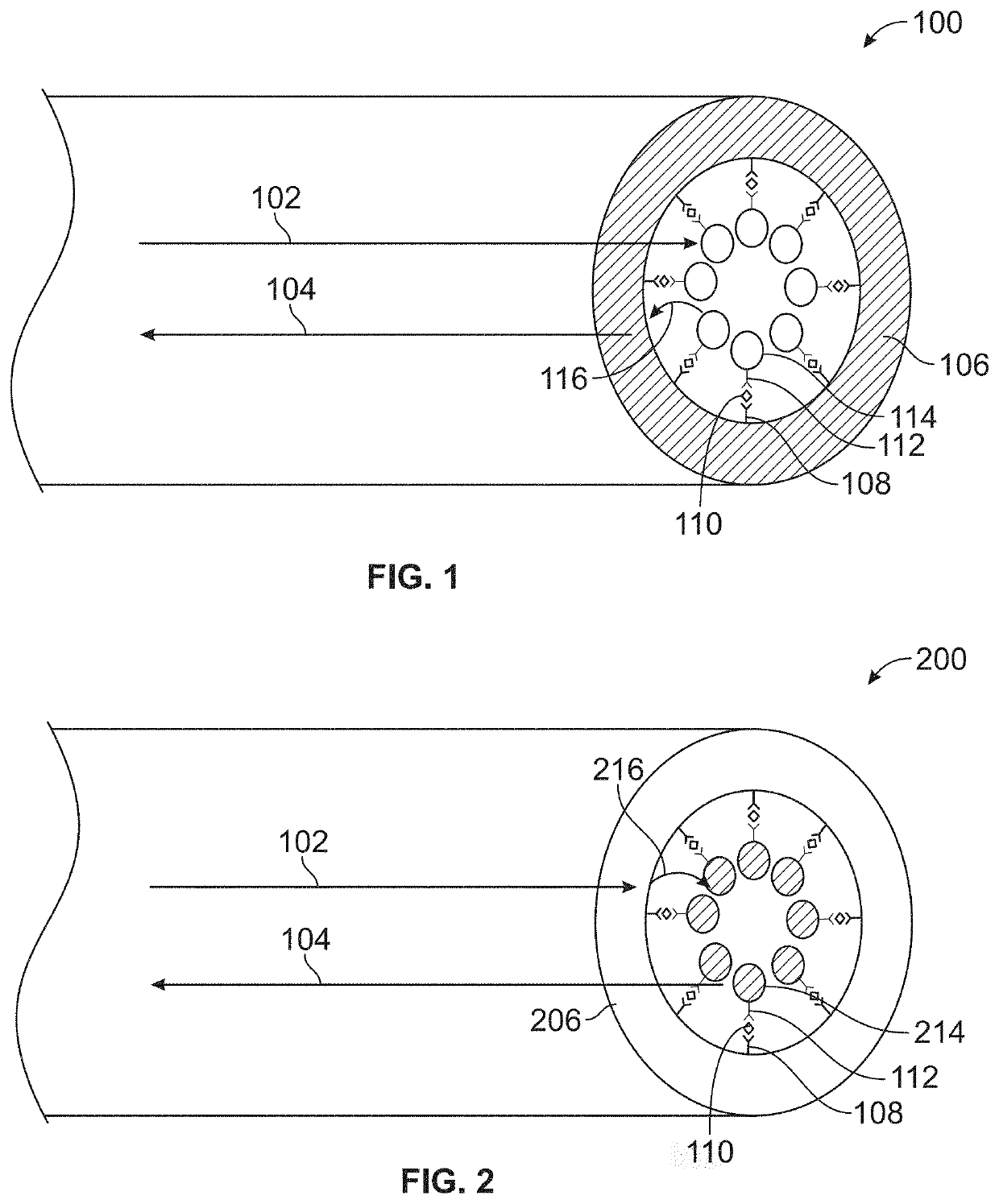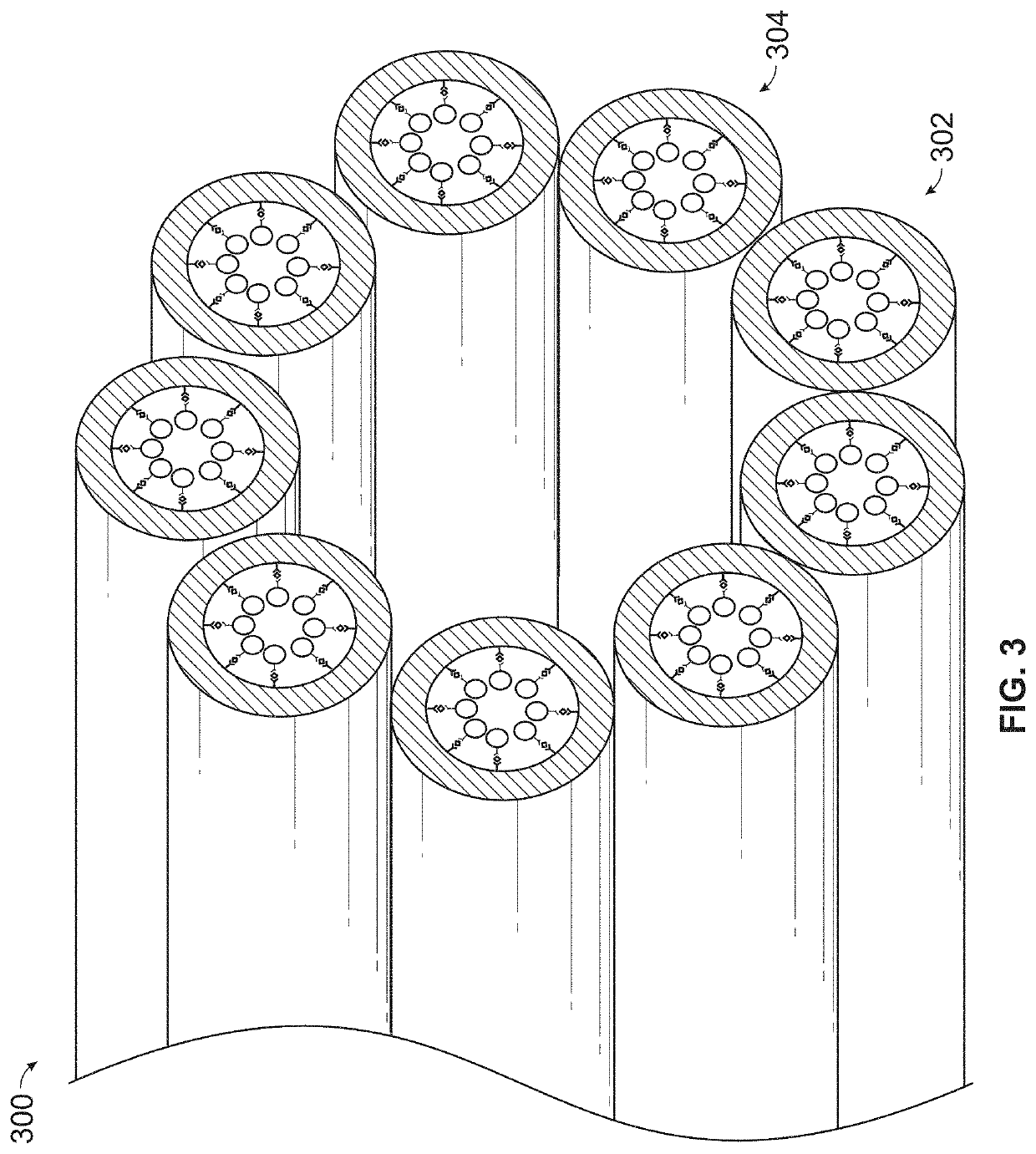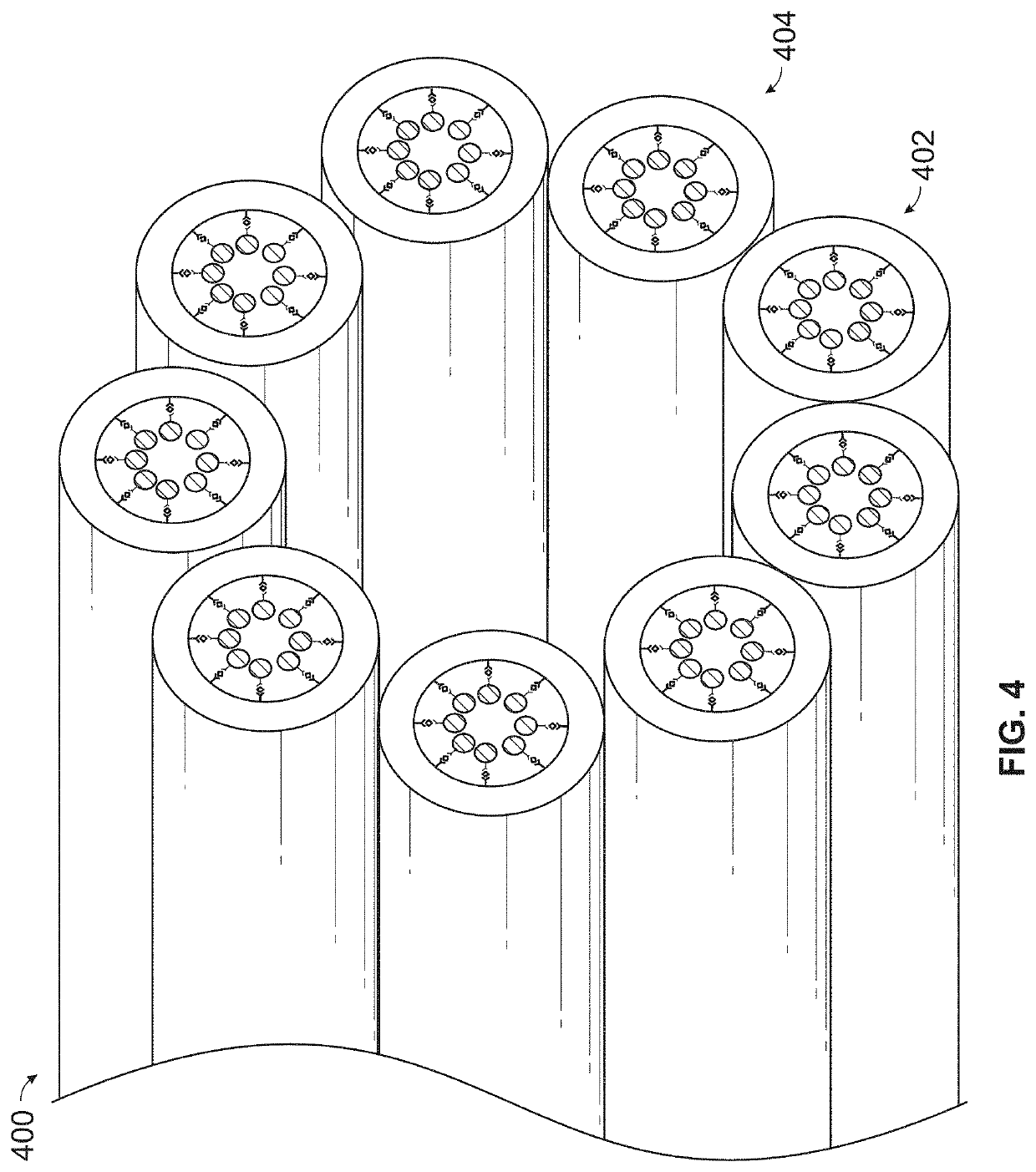Hollow polymer fiber optic system for single analyte and multiplexed analyte detection
a fiber optic system and polymer fiber technology, applied in the field of analyte detection methods, systems and apparatuses, can solve the problems of inability to carry around existing systems that utilize alpha technology, and systems are typically not very accurate, so as to simplify the detection process, simplify the doping process, and the effect of simple and convenient approach
- Summary
- Abstract
- Description
- Claims
- Application Information
AI Technical Summary
Benefits of technology
Problems solved by technology
Method used
Image
Examples
example 3
e Hollow Polymer Optical Fiber for Increasing Binding Surface Area
[0222]Example 3 is an example of a multi-core hollow polymer optical fiber, comprising multiple hollow cores (e.g. hollow channels within the fiber). The multi-core hollow polymer optical fiber provides for increased available surface area for analyte binding, and as well as decreased distance that an analyte or assay reagent needs to diffuse in order to reach the surface of the hollow polymer optical fiber. FIG. 15 is an image of a multi-core hollow polymer optical fiber. FIG. 15B is another image of the multi-core hollow polymer optic fiber. FIG. 15C is an image of an end facet of the multi-core hollow polymer optic fiber showing the multiple hollow cores of the fiber.
[0223]The multi-core hollow polymer optical fiber in this example is made of polystyrene, has an outer diameter of 1.3 mm and comprises 19 hollow channels of inner diameter of 105 μm, each of which was dyed with acceptor dye composition (e.g. comprisin...
example 4
on of a Hollow Polymer Optical Fiber for Dyeing of its Interior Surfaces with Acceptor Dye Compositions
[0224]Example 4 is an example of a process and system components for preparing a hollow polymer optical fiber in order to dope the fiber with acceptor and / or donor dye compositions. In the example process, in order to dope the fiber with acceptor and / or donor dye compositions, polymer optical fibers were connected to a syringe. The syringe is used to pump solutions comprising acceptor dye and / or donor dye compositions, as well as solutions (e.g. water, ethanol) for rinsing the interior of a fiber, into the fibers. The polymer optical fibers were connected to the syringe via an appropriate sized threaded tube fitting nut and ferrule. For a 1.3 mm polymer optical fiber, a 1 / 16th inch high-performance (pressure) liquid chromatography (HPLC) fitting can be used. The fitting nut was attached to a coupler that was then also attached to a syringe or syringe pump. FIG. 16 shows two images ...
example 5
e Interior of a Hollow Polymer Optic Fiber with an Acceptor Dye Composition
[0225]Example 5 is an example of a process for doping the interior of a length of hollow polymer optical fiber with an acceptor dye composition (e.g. comprising a chemiluminescent singlet oxygen acceptor and a fluorescent compound). In the example process, the acceptor dye composition comprises C28 thioxene and a europium chelate (Eu(NTA)3BINAPO).
[0226]A portion (600 μL) of an acceptor dye solution of Eu(NTA)3BINAPO and C28 thioxene in 2-ethoxyethanol, prepared as described in Example 2 above, was placed in a test tube and heated to 70° C. in an oil bath. In order to dope the interior of a hollow polymer optic fiber, 15 cm lengths of hollow polymer optical fiber, for example the 19-hole polymer optical fiber described in Example 3 above, were attached to a syringe as described in Example 4 above. The syringe was filled with 200 proof ethanol. The ethanol was pushed through the attached hollow polymer optical ...
PUM
| Property | Measurement | Unit |
|---|---|---|
| volume | aaaaa | aaaaa |
| total weight | aaaaa | aaaaa |
| transfer distance | aaaaa | aaaaa |
Abstract
Description
Claims
Application Information
 Login to View More
Login to View More - R&D
- Intellectual Property
- Life Sciences
- Materials
- Tech Scout
- Unparalleled Data Quality
- Higher Quality Content
- 60% Fewer Hallucinations
Browse by: Latest US Patents, China's latest patents, Technical Efficacy Thesaurus, Application Domain, Technology Topic, Popular Technical Reports.
© 2025 PatSnap. All rights reserved.Legal|Privacy policy|Modern Slavery Act Transparency Statement|Sitemap|About US| Contact US: help@patsnap.com



